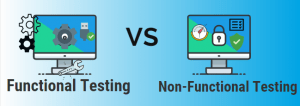To stop a hacker, one needs to think like one and this is what penetration testing (pen testing) is all about. There are many methods of pen testing that an organization may leverage, depending on its requirements.
Black box penetration testing, as an example, requires no knowledge of the network or software and is carried out against several real-world hack scenarios.
In this post, we’ll help uncover black box penetration testing in its entirety. We will look at the definition, example, approach, techniques, tools, advantages, and disadvantages of this testing. It’s worth noting that many of our clients ask for pen testing services to expose security issues of their systems, how these weaknesses were exploited – and necessary steps to fix them as well.
What is Black Box Penetration Testing?
Black box pen testing is used to examine a system against external factors responsible for any weakness that could be used by an external attacker to disrupt the network’s security. A black box test pays attention to inputs entering into the software and outputs it generates.
The tester has no access to the code, implementation details, or knowledge of the internals of the software.
The test cases are written according to the application’s requirements. The only way to break into the software is through similar interfaces used by customers or by external interfaces permitting several computers and processes to connect to the application under test.
The limited information available to the pen tester makes black-box testing less time–consuming than other types of penetration testing, such as white box testing. The tester only focuses on the software’s GUI and does not need to dig into the code to identify process issues. Also, the functional specifications are fewer since the codes aren’t deployed fully.
Reasons to Conduct a Black Box Test
- Black box testing allows you to quickly identify errors in functional specifications.
- It provides unbiased tests since the designer and tester work independently.
- Testing takes place “from the position” of the user.
- Testing using the black box method not only identifies security gaps in the system, it helps determine hidden GUI errors
- Black box testing simulates the behavior of a user who does not know the internal structure of the program.
Test Types
The following types of testing are carried out by the “black box” method:
- Functional: Functional tests aim to analyze each function of the software product, by providing correct input, confirming the output against the functional specifications.
- Regression: Its purpose is to prove that a previously working application still performs well after revisions applied to certain parts. Regression tests assure that nothing has been modified.
- Nonfunctional: Nonfunctional testing’s main goal is the verification of a specification that defines the standards to be used for measuring the performance of a system. These combine non-functional requirements, such as usability, look and feel, efficiency, security, etc.
Testing Procedure
- Check the software’s specifications.
- Select appropriate units to verify if the system under test runs them correctly. Next, select inappropriate inputs to validate that the system under test can locate them.
- Determine an intended output for every input.
- Write test cases using chosen inputs.
- Execute the test cases.
- Check the realized outputs against the intended outputs.
- Debug the system and retest.
Test Techniques
Some of the black-box penetration testing techniques widely used across teams include:
Decision Table Testing (DTT)
The decision table is a black box testing technique helpful in testing multiple combinations of inputs. The technique uses a table to present these inputs and their outcomes. It’s a tabular representation of input conditions and resulting actions.
Equivalence Class Partitioning (ECP)
This black box penetration testing methodology separates the input domain into different data categories. Using the divided classes, new test cases can be created. Each equivalence can also define a group of correct or incorrect states.
Boundary Value Analysis (BVA)
BVA consists of evaluating the ends or boundaries of classes. It’s a spin off of ECP but used mostly when the classes are sequences, numerical, or ordered. The minimum and maximum values of a partition are its boundary values.
Error Guessing (EG)
Error guessing is a technique of guessing the most prominent code errors. Error guessing helps discover several defects that regular systemic approaches fail to find. It bases on the tester’s prior interaction with the system and the ability to ascertain places the errors may recur.
What Tools Do Ethical Hackers Use for Black Box Testing?
Black box penetration testing tools comprise recorders and playbacks. They track test cases such as scripts, including Perl, Java, VB, etc.
Selenium
Selenium is a portable platform useful for web apps. It features playback for writing functional tests in the absence of scripting language knowledge. Using this framework, you can create test cases with a language, such as Scala and Ruby, which are suited for particular domains. for testing web applications.
Appium
Appium is a cross-platform testing tool that is flexible, allowing you to write the testing code against different platforms such as iOS, Windows, and Android using the same API. In other words, you can use the same code for iOS that you have written for Android, saving lots of time and effort. Similar to that of Selenium, Appium offers test scriptwriting in various programming languages which include Java, JavaScript, PHP, Ruby, Python, and C#.
HP QTP
QTP stands for QuickTest Professional, a product of Hewlett Packard (HP). This tool aids testers to do automated functional testing seamlessly, without monitoring, once script development is finished.
HP QTP employs Visual Basic Scripting (VBScript) for automating the software. The Scripting Engine doesn’t have to be installed solely, since it’s accessible as a part of the Windows OS.
Ranorex
Launched to the market in 2007 by Ranorex GmbH, an Austria-based software development firm, Ranorex Studio is a commercial Windows platform that provides testing for desktop, web, and mobile apps.
Ranorex doesn’t need specific scripting programs. It’s developed on Microsoft’s .NET platform. Ranorex is compatible with standard programming languages C# and VB.NET to edit recordings or create custom tests.
Challenges Penetration Testers Face During Testing
Unfortunately, the use of this method is far from always sufficient during testing, since there is a high probability of missing an error. Let’s consider an example from practice.
When testing a registration and payment form for a VPN provider, the client was offered a choice of a set of tariff plans and additional services. After the selection and payment, the registration was completed, and the client got into his account. We tested this procedure inside out: everything worked as it should, exactly until when we introduced a new promo plan to attract customers.
The first promotion of this kind was successful: when registering under the promo plan, the client was credited with a bonus on the account, and he was given free access for 30 days to one friendly service. The second promotion was distinguished by the fact that the client was offered a choice of one of three friendly services for free access during registration.
And then something went wrong: all new customers were sent access only to the friendly service from the first promotion. We received a wave of indignation in support and customer churn. Clearly, there were some unaddressed bottlenecks in the tests, which explains the system’s malfunction. If multiple testers run the pen tests, the defects will be less likely to be missed.
Getting Started with Black Box Penetration Testing
One of the basic things to consider before starting is the cost of pen-testing. Creating a reasonable budget based on defined penetration testing pricing is likewise essential. It can be helpful to take inventory of the existing security processes in place and assess the areas in need of some improvements.
You may also want to perform a risk assessment to get the bigger picture of how a potential data breach could affect your business.
Lastly, organizations should hire certified penetration testers to ensure that they have hands-on experience in different pen testing methodologies. If you’re yet to learn the strategies or questions necessary to recruit a creative and effective team, use this post on penetration testing interview questions and answers.








